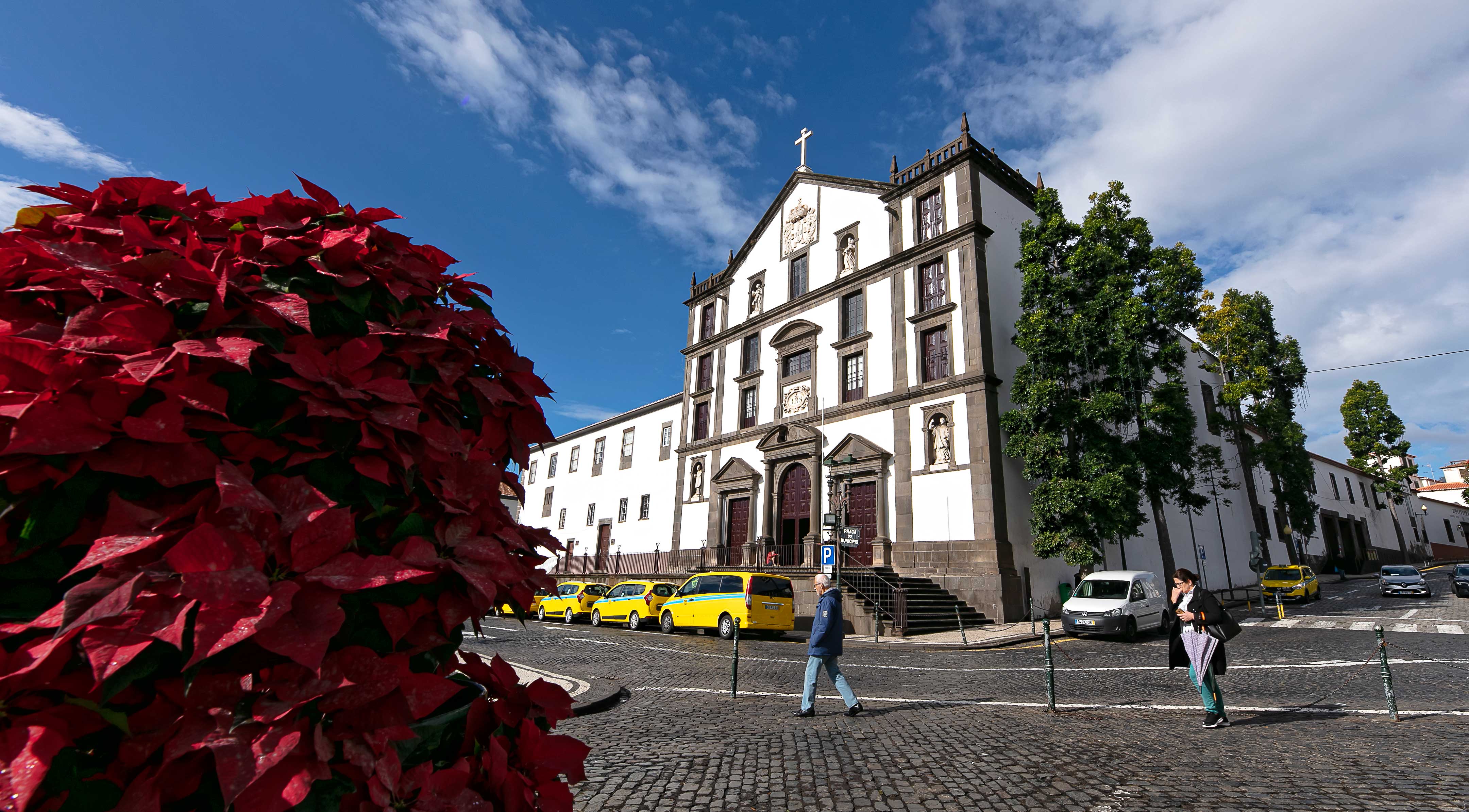Some hold it to be Madeira’s most beautiful church, regardless it is without a doubt a tribute to the baroque.

This article contains suggestions which are meant to inspire you for the day when travel and movement restrictions are lifted. For now, please cooperate with the authorities by staying at home. Help the World to defeat Covid-19!
Better known as the College church, the Church of St John the Evangelist is located in Praça do Município, in Funchal. It is part of the Jesuits’ College and until the 19th century they were the town’s largest edified complex.
Construction for the church began in 1629. It conforms to the mannerist style, following the normal scheme of the religious order to which it belonged, the Society of Jesus which had the Church of the Gesù in Rome as a model.
It features a longitudinal blueprint, with an inscribed transept, a not very steep main chapel and side altars. Addorsed to the left-hand side is the sacristy.
The inside is dominated by the great nave that has a ceiling painted in ‘trompe l’oeil’, as well as the vault of the main chapel, with exquisitely beautiful images alluding to the Society of Jesus, walls with frescos representing the evangelists and illuminated by the rectilinear windows of the main façade.
The church also features a high chorus, an organ, communicating chapels decorated with tiles, paintings and altarpieces made of gilded wood.
The baroque style predominates in the interior of the Church of St John the Evangelist. It is the most expressive example of this art in the churches of Madeira, following the idea that art should fill in the totality of the space, an absolute baroque.
Gilded wood is used profusely in the altarpieces. One of the most notorious cases is the chapel of the 11 thousand virgins, the altarpieces of which is attributed to Madeiran woodworker Manuel Pereira.
Not many years ago, during restoration and preservation works, beautiful frescos were ‘uncovered’ in the walls which had been hidden under layers of lime that stopped us from appreciating them for years.
Every year, during the Madeira organ festival, we can relish in the magnificent sound of the organ installed in the church by Master Dinarte Machado.
Typically Jesuit mannerist, the main façade has a body parted in three by the spans, side-lined by the bell towers at the same height, a solution also present in other temples of the same order, namely the College Church in Ponta Delgada, Angra do Heroísmo and Horta, all in the Azores and Elvas.
The Jesuits’ College of Funchal was the first in the Portuguese expansion and served as a model for other sites in the empire. Its construction results from a 1566 corsair attack to Funchal which brought the first Jesuits to the island to offer spiritual comfort to the populace.
The construction of the complex will have begun with the tower, which presents a military design by Mateus Fernandes, royal master of works sent to Funchal following the corsair attack with the mission of fortifying the city.
Mateus Fernandes elaborates a project for the college which is revised by architects of the Society of Jesus. But construction for the church goes ahead in 1574. Still today, the bulky body stands out of the whole. It is one of the parts of the church open to visitors.
The building, separated from the Praça do Município by a high basis forming a layered churchyard faces the old Episcopal Palace.
The Students’ Union of the University of Madeira has been promoting tours to the church for six years. These are guided by students and volunteers of several nationalities and allow for a deeper knowledge of the importance of the Church of St John the Evangelist to religion, art and the history of Madeira.
Article written in February2020. (Issue no. 78, February/March)













